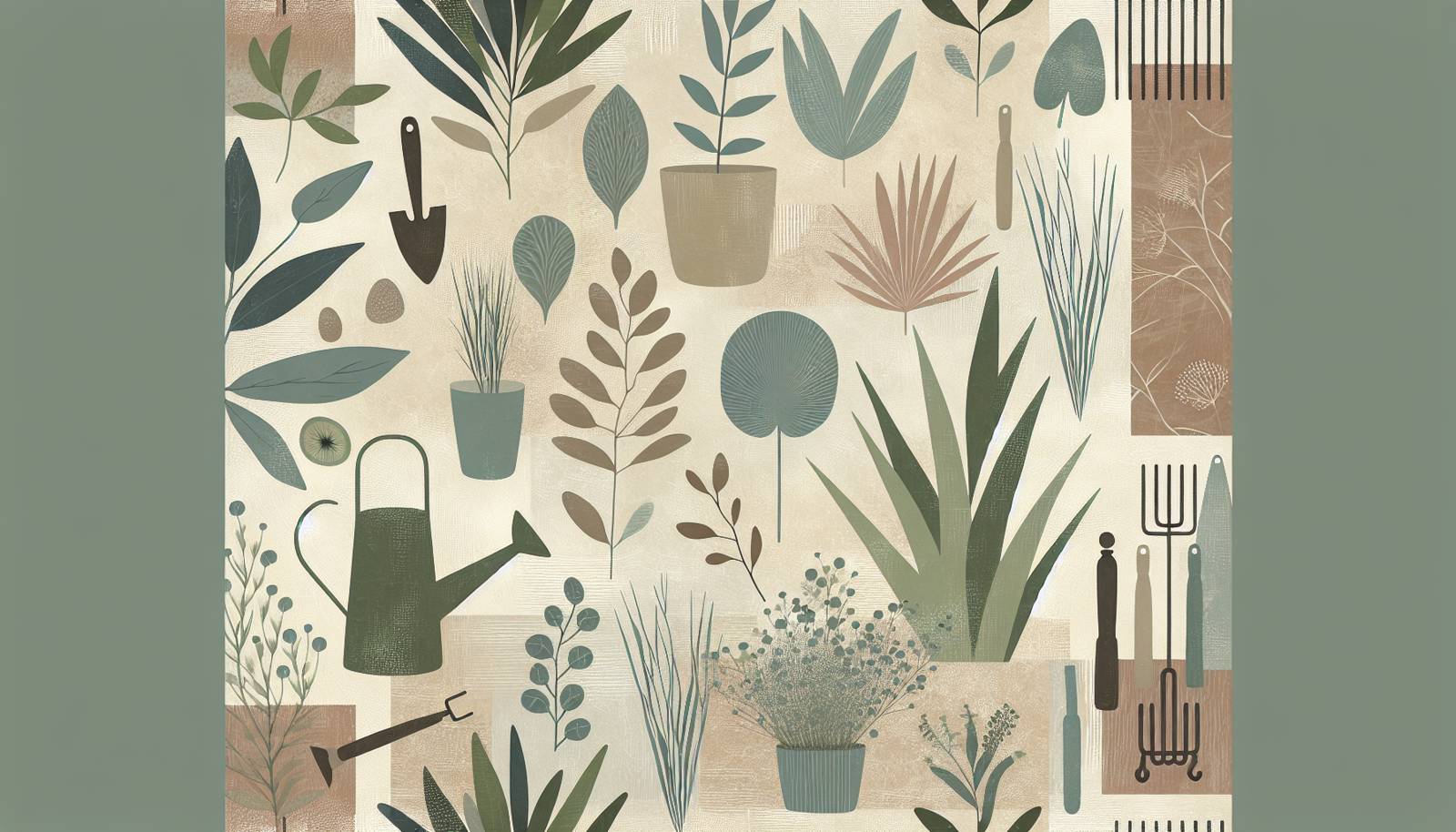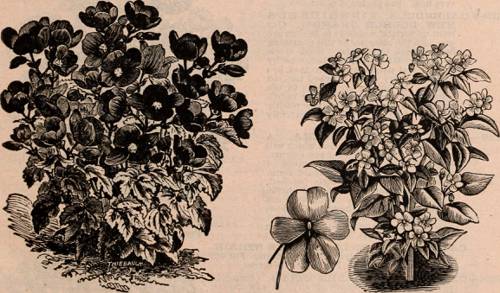
FAQ About Essential Tools for Indoor Plant Care

What are the essential tools for indoor plant care?
The essential tools for indoor plant care typically include moisture meters, pruning shears, grow lights, and humidifiers. Each of these tools plays a crucial role in maintaining healthy plants. Moisture meters help in monitoring soil water content, pruning shears are used for trimming plants, grow lights provide necessary light when natural sunlight is insufficient, and humidifiers maintain the right humidity levels.

How does a moisture meter help with indoor plant care?
A moisture meter is a device that measures the moisture content in the soil. It helps plant owners avoid overwatering or under-watering, both of which can be detrimental to plant health. By using a moisture meter, you can make informed decisions about when your plants need watering, ensuring they get just the right amount of moisture for healthy growth.

What are the benefits of using grow lights for indoor plants?
Grow lights provide a significant benefit by allowing plants to photosynthesize when natural sunlight is not available or inadequate. This is particularly useful in places with long winters, for indoor spaces that receive limited sunlight, or when growing plants in basements or other sunless environments. Grow lights mimic the natural solar spectrum, giving plants the energy needed to grow, bloom, and flourish.

Why are pruning shears important for indoor plants?
Pruning shears are essential for maintaining the shape and health of indoor plants. By regularly trimming back dead, diseased, or overgrown branches and leaves, you encourage new growth and prevent potential plant diseases. Pruning also improves air circulation around plants, leading to better health and vitality.

How can a humidifier benefit indoor plants?
Indoor plants, especially tropical varieties, thrive in environments with higher humidity. In dry indoor climates, a humidifier can help maintain a balanced moisture environment, preventing plants from drying out, wilting, or developing leaf problems. It helps recreate the natural conditions these plants require for optimum growth.

Can essential plant care tools reduce plant stress?
Yes, using essential tools such as moisture meters, pruning shears, and humidifiers can significantly reduce plant stress. For example, accurately watering with a moisture meter prevents over- or under-watering stress, pruning shears help in removing stress-inducing damaged parts of the plant, and humidifiers ensure the environment is adequately humid, minimizing stress from dry conditions.

What features should I look for in a good moisture meter?
When choosing a moisture meter, look for features such as ease of use, accuracy, and durability. Many good moisture meters have clear, easy-to-read digital displays, a range of settings for different soil types, and robust build quality. Some also include additional features like a light sensor or pH tester, which can be helpful for comprehensive plant care.

How do grow lights differ from regular lights?
Grow lights are designed to closely mimic the natural solar spectrum, offering the specific wavelengths of light that plants use for photosynthesis. Unlike regular lights, which may not provide the necessary light spectrum or intensity, grow lights are engineered to support plant growth at various stages, from seedling to flowering.

What types of plants benefit most from grow lights?
Plants that require high light levels, such as herbs, succulents, and many tropical plants, benefit greatly from grow lights, especially when indoor lighting is insufficient. Seedlings and plants during the flowering stage may also require more direct light, which grow lights can efficiently provide.

What are common mistakes to avoid when using pruning shears?
Common mistakes when using pruning shears include cutting too much off the plant, not sanitizing the shears between uses, and pruning at the wrong time of year. Ensure your pruning shears are clean and sharp for precise cuts, and always prune plants according to their specific care requirements to avoid causing stress or damage.

How do I maintain a humidifier for indoor plants?
To maintain a humidifier for indoor plants, regularly clean it to prevent mold and bacteria buildup. Use distilled water if possible to avoid mineral deposits and clean the filter frequently. Follow the manufacturer's instructions for maintenance to ensure it operates effectively, providing the necessary humidity levels for your plants.

Can indoor plant care tools be used for all types of plants?
While most indoor plant care tools can be used for a variety of plants, it's essential to consider the specific needs of each plant type. For instance, not all plants require the same light intensity or humidity levels. Understanding the specific requirements of each plant will help you decide which tools are most appropriate to use.

How often should a moisture meter be used on indoor plants?
It's best to use a moisture meter before each watering session to check the soil's moisture level. This will help prevent over-watering, which is a common issue with indoor plants. However, the frequency might vary depending on the plant species, pot size, and environmental conditions.

What are the different types of grow lights available?
The main types of grow lights include fluorescent, LED, and high-intensity discharge (HID) lights. LED grow lights are the most energy-efficient and effective for a wide range of plant needs. Fluorescent lights are suitable for growing leafy plants and seedlings, while HID lights are ideal for flowering plants due to their high output.

When is the best time to prune indoor plants?
The best time to prune indoor plants is typically during the growing season, in spring and early summer. Avoid pruning in late fall or winter when many plants are in their dormant phase, as this can stress the plants and inhibit growth in the following season.

How do you choose the right size pruning shears for your plants?
The right size of pruning shears for your plants depends on the size and type of plants you're working with. Small, delicate plants might require smaller, precision pruning tools, while thicker branches on larger plants need more robust, larger shears. It's essential to select shears that feel comfortable and secure in your hand to make precise, healthy cuts.

Do humidifiers need to run continuously for plant health?
Humidifiers do not need to run continuously, but it can be beneficial to keep humidity levels consistent. Running the humidifier on an intermittent schedule or using a humidistat to maintain optimal humidity levels can efficiently support plant health without wasting energy or water.

Can grow lights harm indoor plants if used incorrectly?
Yes, grow lights can harm indoor plants if not used correctly. Too much light can lead to leaf burn or stress, while insufficient light might impede growth. It's crucial to adjust the distance and duration of light exposure based on the specific needs of the plants to avoid any potential harm.

Are there any smart devices that integrate with indoor plant care tools?
Yes, many smart devices can integrate with indoor plant care tools. Smart moisture meters, for instance, can send alerts to your smartphone when watering is needed. Some smart grow lights can be controlled via apps to adjust light schedules and intensity automatically. These tools can streamline plant care and offer better insights into your plants' conditions.
